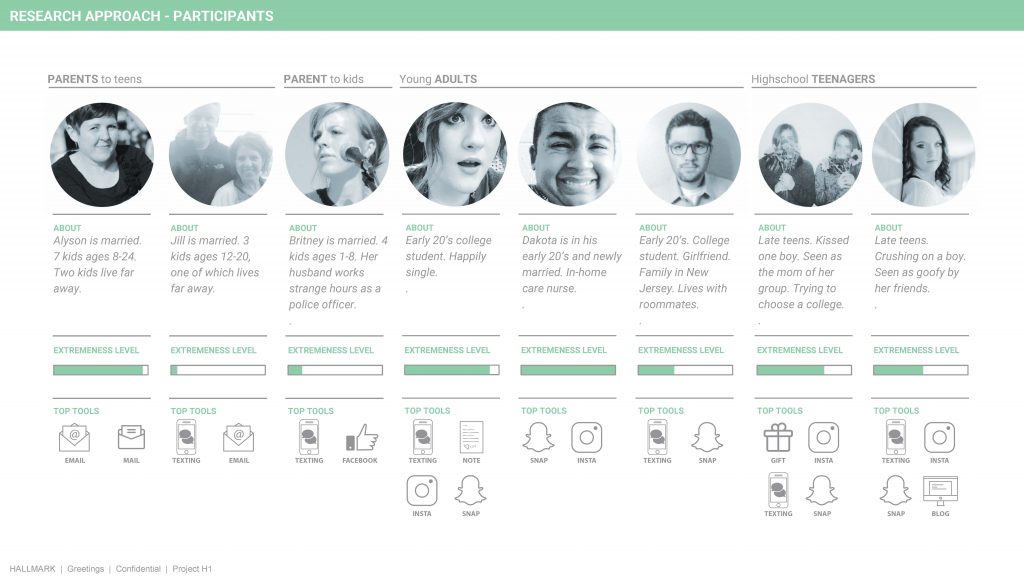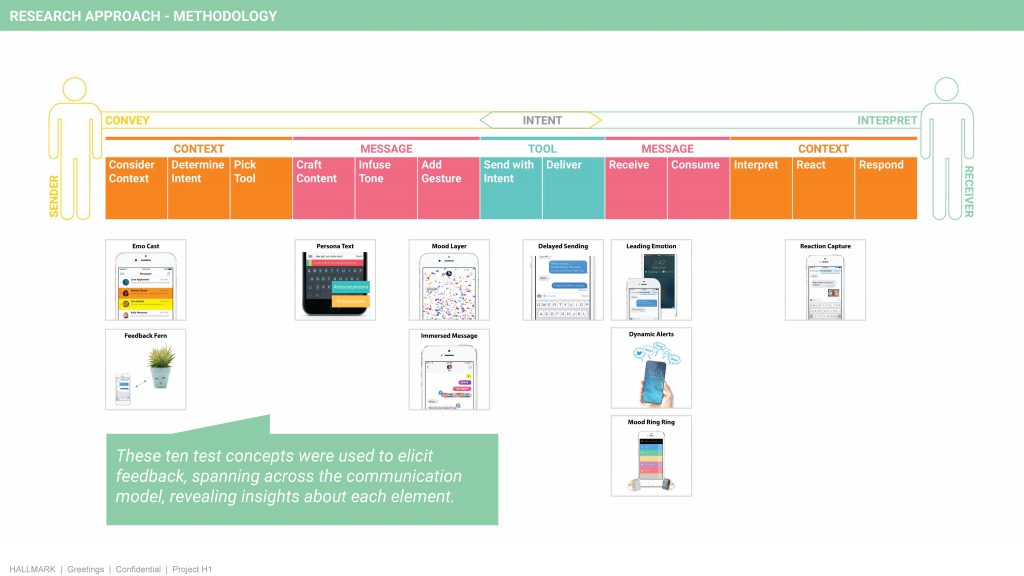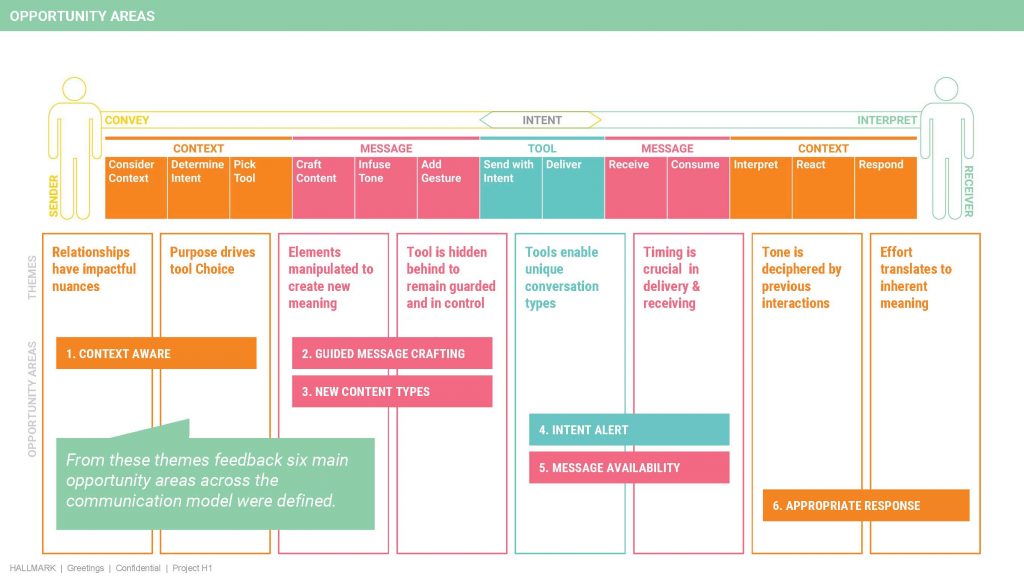I believe technology exists to assist living creatures, but sometimes the way it is implemented can get in the way and cause more harm than help. This is often true with human-to-human communication, which is at the core of relationship development. Hallmark, a master of facilitating relationships, hired me as a research and design consultant to explore and identify potential opportunities for enhancing meaning derived from interpersonal communication, aided by technology. The challenge is that many aspects of interpersonal communication we utilize in face-to-face communication are hampered with technology, such as, tone and gestures. In asynchronous interpersonal communication we rely almost completely on content alone, leaving a large void while trying to convey and interpret the intent of a message. How can we leverage technology to make up for where humans lack in creating deeper connections to each other?

To tackle this project, I rounded up two grad students at ASU, where I was teaching at the time, to collaborate with and we jumped in. 90% of the lift was on me including; scoping, research protocols, recruiting, interviewing, transcribing, analyzing, synthesizing, and presenting. The students were great support in making things flow and they brought a richness that comes through conflicting point of views and talking things through.
Planning
We started with an initial framing as our hypothesis. We had a general understanding through some secondary research of the essential elements of communication.

We also added to this initial understanding some secondary research on communication trends and found that digital was often the first means of communication in relationship development. Relationships of all kinds (friendship, romantic, business, etc.) are starting, developing, and ending in the digital realm. This led us to focus our project approach to digital communication, knowing their were more tangible implications as well.

As we started to get deeper into the research planning we discovered that the initial hypothesis for the project was overly focussed on the sender and not balanced with equal focus on the receiver of messages. We searched for and identified a more comprehensive model of communication to aid our research inquiries. This model became the backbone of exploration and explanation of opportunities.

Research
We developed a research protocol that would allow us to find out about each aspect of this model. Through two rounds of research we were able to get a deep understanding of the role of technological tools in interpersonal communication and relationship building. In round one we had very open ended conversations with people about various tools (physical and digital) they use to communicate, with a focus on asynchronous interactions.



Research methods included: in-depth interviews, tool sorting, favorite tool tour, send / receive message, text concepts



Participants were recruited to represent ‘extreme communicators’ in some way. They intentionally ranged across various generations and primary communication tool usage.

We developed ‘fake’ concepts to take in the field with us. These ideas represented different aspects of the communication model. This way we could get a deeper understanding of how people value approaches to creating and sharing meaning through communication.

Analysis
Analysis of the research data led us to several opportunity areas and illustrative concepts to help the client understand how to deliver on the emotion and functional needs within these spaces.

The details of this section are confidential, although this image illustrates where things are headed. We showed the client how participants felt about each tool and ‘fake’ concept. Their responses led to ideation about how Hallmark could provide solutions to help better facilitate emotional connection through enhanced communication.

Reflection
I love that this project allowed me to get deep into understanding a human context, with all of its cultural messiness. Technology supporting human connection is constantly changing and evolving and it was a fun adventure to envision future states for Hallmark to pursue.
I loved the openness of this topic and urgency it plays for this organization. If Hallmark does not find a relevant way to be involved in the lives of rising generations it will not succeed.
Looking back I feel like there was more I could have done to show Hallmark a variety of formats beyond digital. Because this is not a native format for them, it will take a large imaginative leap for them to see how they could connect with the content. This was also beneficial in some ways because it helped them see how far they have to come to be relevant to rising generations. Baby steps, headed toward great leaps tend to win, especially with leadership of legacy brands.
I love when there is a driving framework or conceptual model that concisely explains the complexity of cultural exchange or creation of meaning.
I also love when we get to play with ‘fake’ prototypes to explore principles within a topic. Co-creation approaches to design research, in generative sessions, is my jam. My point of view is that getting people in a state of play helps them open up in a way that no other state of mind can. They are willing to explore past, present, and future.


